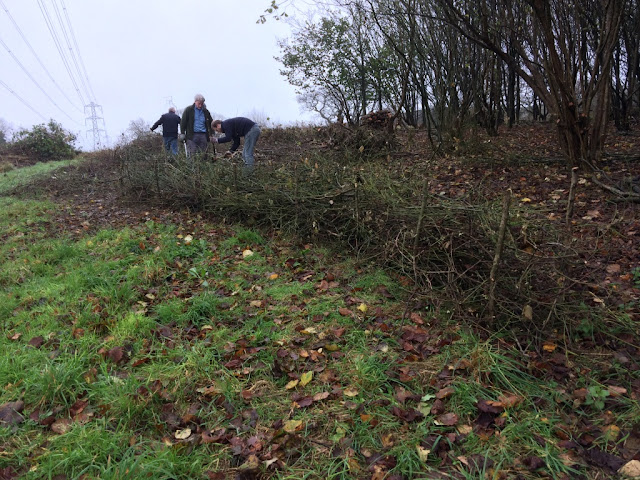This is one of the few birds that you can hear right through the winter. A very loud voice for a very small bird. It's a jolly little song with a string of chirruppy phrases including a long 'churrrr' towards the end.
My Collins Bird Guide describes the wren as "very small, and this reinforced by ludicrously small tail that is usually raised vertically, also by short neck"
But it's not always easy to spot a wren as it likes zipping around in dense undergrowth and will often sing from the middle of a bush or a pile of twigs and branches.
Wrens like to breed in woodland with dense undergrowth and overgrown clearings. This is the sort of habitat we hope to promote with our coppicing activities. At first the coppiced area or coupe looks rather bare and barren, but by cutting down the shrubs and removing some trees we let more light in and hopefully a dense under storey develops.
Just right for wrens.
Just right for wrens.

















































